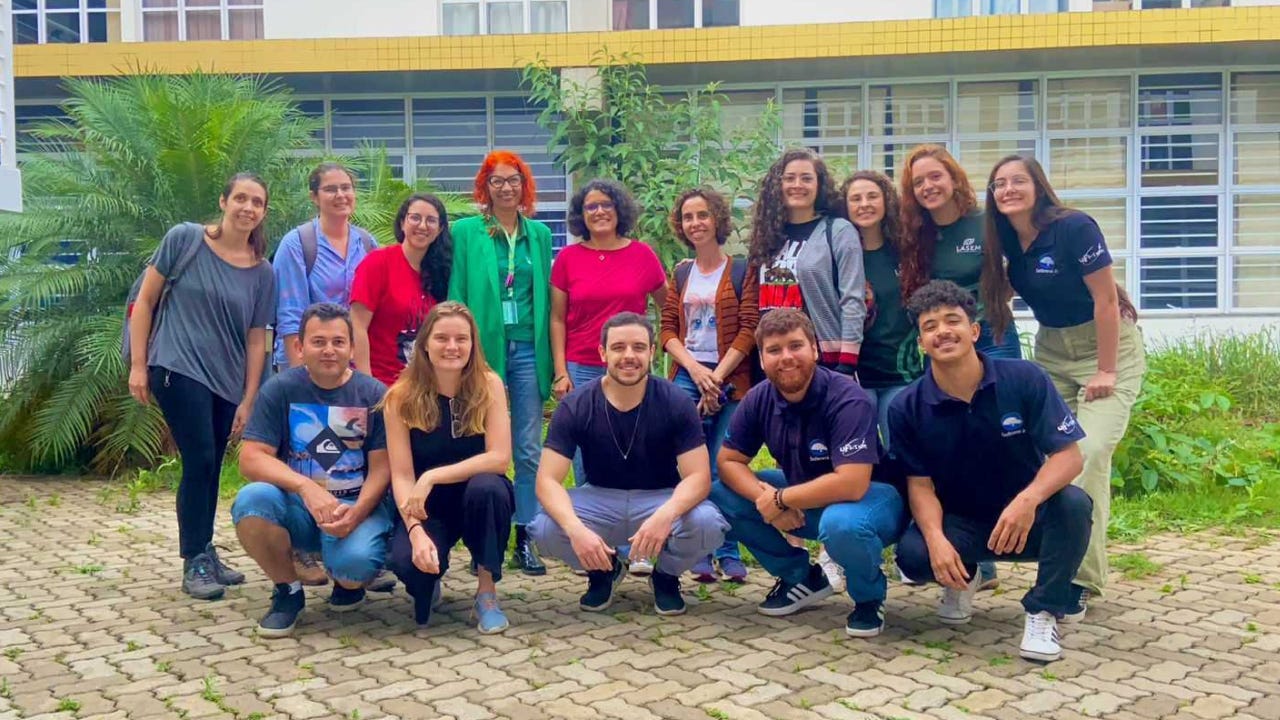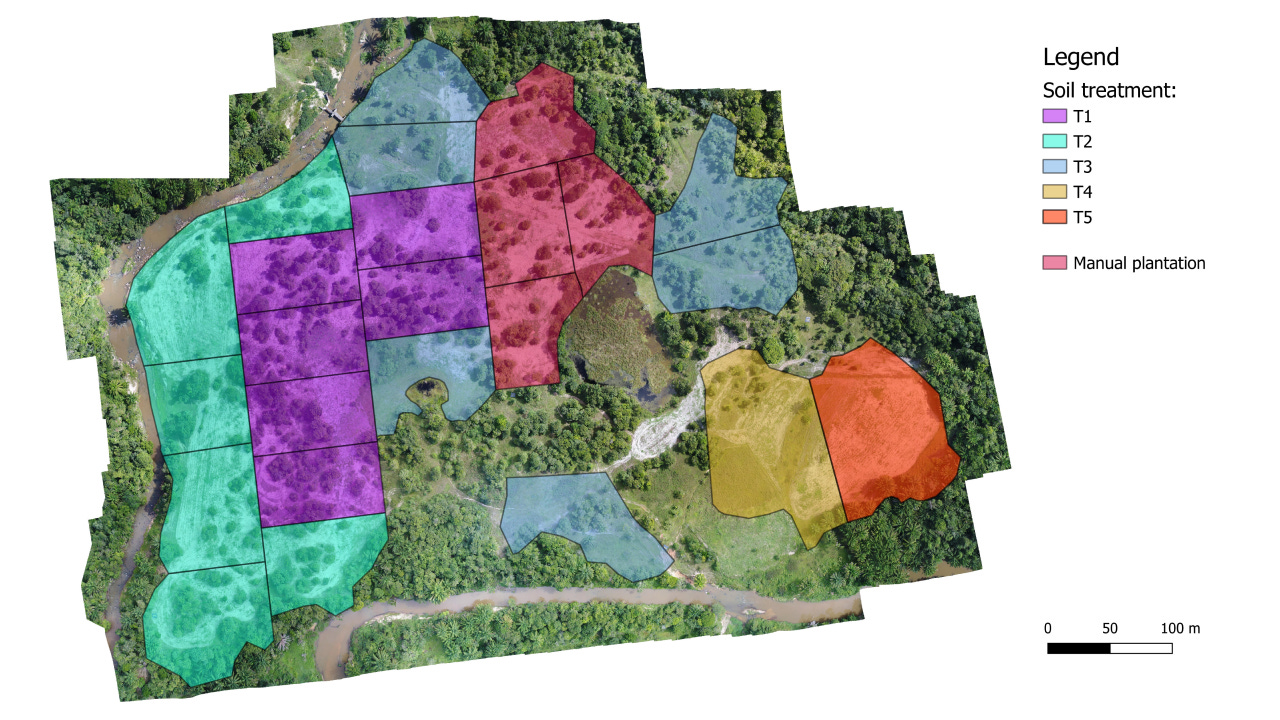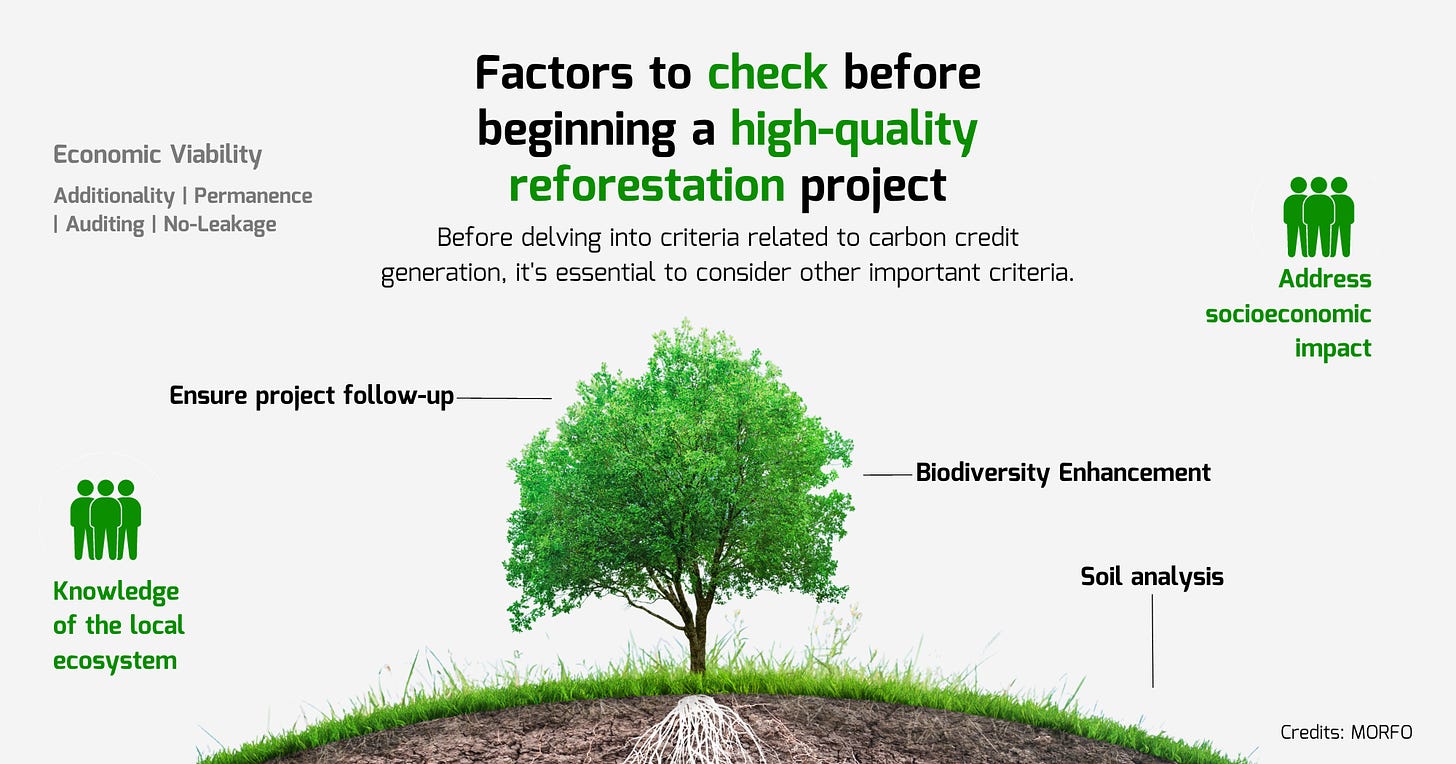Hi there!
Rocket launches may seem quick, taking only 3 minutes to reach space, but in reality, they need years of research and development to make it happen.
Similarly, MORFO's mission extends far beyond the forest planting process. It's the result of months and years of dedication and research, both before and after planting, to make sure we restore native and resilient forest ecosystems!
For each one of our projects, we meticulously select seeds from our catalogue, plant between 20 and 30 diverse, native, and complementary species, analyze soil conditions, and tailor our approach to specific planting zones.
In this new edition of our newsletter, we take you behind the scenes.
Pascal, Co-founder of MORFO
🚀 Preparing for lift off
Head of our ecosystem R&D Emira (in pink 💗) has been in and out of conferences in Brazil! This month, Emira has been sharing knowledge, educating on ecological forest restoration, meeting professors, discussing with scientists… With top universities such as the UFV, UFScar and UFPR, with which we partner with.
Emira's impact goes beyond lecture halls. She’s also the one leading MORFO’s R&D and scientific partnerships with these leading institutions, which help us research forest ecosystems, develop new technology and, most importantly, increase reforestation success rates!
Thank you to Fatima Piña-Rodrigues, Igor Assis, Cynthia Canedo Silva, Alessandra Ribas, João Carlos Bespalhok Filho, UFSCar and Ecoflorestal for the invitation.
🔬 Why do we need experimental projects?
Our experimental projects run alongside "real" plantation projects. They aim to compare how plantations evolve based on varying factors like soil preparation, seed types, and more.
Remember our earlier discussion about an experimental project in the Brazilian state of Bahia? Well, with the help of local partners, we're closely monitoring the plantation. The results are very encouraging. For example, out of the 25 species we planted last April, 16 have already sprouted and started growing. We've also identified new factors for optimizing soil preparation.
MORFO's work involves constant refinement of our methods and knowledge. Every project and experiment helps us learn and grow, mirroring nature in every detail.
📺 A quality project involves more than just planting
This Thursday, October 26th, we're revealing our white paper titled "The Future of Reforestation Carbon Credits - Prioritizing biodiversity and socioeconomic benefits for effective carbon sequestration." The name emphasizes a key message from our interviews: the project's quality should be the top priority before carbon capture. You can explore this and more insights in our webinar or the PDF version.
💼 We’re hiring!
We're excited to announce that our team is expanding! 3 posts are open in Rio de Janeiro, Brazil (CFO, Admin Supervisor and Business Developer Intern) and 2 posts in Montpellier, France (Data Scientist Intern and Founders' Assistant Intern).
Apply now and become our newest MORFellow!
📰 This month, we also recommend reading…
Just like every month, we end this newsletter with a few articles that we want to share with you:
Reforestation methods comparison: drones, hydroseeding, manual planting and natural regeneration: Read here (EN, FR, PT)
Countries with the most biodiversity: Read here (EN)
Confronting deep uncertainty in the forest carbon industry: Read here (EN)
Why focusing on restoring degraded forests can enhance forest carbon stocks more efficiently than replanting in deforested areas: Read here (EN)
Forests are worth more than their carbon: Read here (EN)
The mystery of “tree shyness”: Read here (PT, EN)
Seed collection networks generate income and promote restoration in the southern region of Bahia: Read here (PT)
🌍 Thank you for reading this newsletter until the end! If you enjoyed it, please share it with your audience, friends, or colleagues. To check us out and follow our social media platforms, please click here!
We'll be back again in November!
The MORFO team






